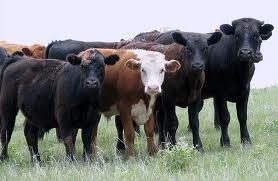 There is a large push to be more user friendly in what we do on a daily basis. This includes farming and everything that goes with it. There have been a variety of investigations on the environmental impact of camelids, including their containment, shelter, feed intake, water intake, fecal output, fecal examination for pathogens and pasture management. These are the results of the studies by David E. Anderson, DVM.
There is a large push to be more user friendly in what we do on a daily basis. This includes farming and everything that goes with it. There have been a variety of investigations on the environmental impact of camelids, including their containment, shelter, feed intake, water intake, fecal output, fecal examination for pathogens and pasture management. These are the results of the studies by David E. Anderson, DVM.Camelids are easily contained and rarely challenge fencing. These species do not perform activities that are destructive to fencing and wooden structures and rarely jump through, over, or under fences. Shelter must be provided for protection against adverse weather conditions. We have determined that alpacas require a minimum of eight square feet per animal and llamas a minimum of 10 square feet per animal. Three-sided shelters with a room are usually adequate for the requirement.
Feed and Water Intake
Camelids consume approximately similar amounts of water as do goats (approximately 1 to 1.5 gallons per head per day for alpacas; 2 to 3 gallons per head per day for llamas). Daily urine output of alpacas (average adult body weight 125 to 165 pounds) and llamas (average adult body weight 250 to 350 pounds) are similar to that of sheep (average adult body weight 150 to 300 pounds) and goats (average adult body weight 125 to 200 pounds). Thus, the biological equivalency to sheep in approximately equal.
Fecal Output
Camelids consume a relatively low percentage of their body weight in dry matter on a daily basis as compared to sheep and goats. Sheep and goats are expected to consume approximately 25% of their body weight per day. For example, a 200-pound sheep consumes 5 pounds grass per day (assuming 30% dry matter of grass). Alpacas and llamas are expected to consume approximately 1.8% of their body weight per day in dry matter e.g. a 200-pound camelid would consume approximately 3.6 pounds of dry matter or 12 pounds of grass per day (again, assuming 30% dry matter of grass). Fecal output is proportional to dry matter intake. Thus, the biological equivalency to sheep in approximately 0.72. Based on these findings, we consider camelids to be a low risk for ground water contamination.
Urine is a necessary by-product of life. Water is a vital nutrient for digestion and metabolic processes. Marcilese et. al. (1994) determined water turnover in llamas. In winter, body water was estimated at 659 ml/kg, while non-lactating llamas was 260 ml/kg. In studies of water consumption, alpacas consumed similar water on a body weight basis as compared with goats. Rubasamen et. al. (1975) determined that llamas consumed 62 ml/kg/24 hours and goats consumed 59 ml/kg/24 hours. Thus, a 60 kg (132 pound) alpaca will produce approximately 1 quart 600 to 900 ml) of urine per day.
Pesticide Use
Pesticides are uncommonly used in alpacas because the limited need to do so. Thus, the potential environmental impact is negligible.
Fecal Pathogens
Compared with traditional livestock species, camelids are not known to be carriers of important pathogens (e.g., Johne's diseas, Salmonell sp., E. coli) and are uncommon carriers of secondary pathogens (e.g. Cryptosporidium sp., Giardia). In our studies involving random samplings of farms with camelids, we have not found Salmonella or Johne's disease organisms. In a study performed by the University of California at Davis, they did not find E. coli or Crypotsporidium in camelid feces. Compared with traditional livestock species, we do not consider camelids to be a source of concern for potential pathogens to the human population.
Pasture Management
Summary Statements
Based on our research to date, we consider camelids to be one of the lowest risk species in North American agriculture with respect to potential human exposure to pathogens or to by-products of the animals' waste. Therefore, this species seems to be ideally suited to "urban farming" settings.

